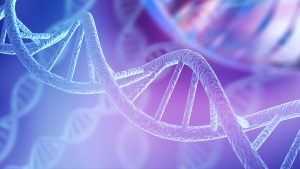AACR Virtual Annual Meeting I: Using Biomarkers to Predict Responses to Immune Checkpoint Inhibitors
Over the past decade, immune checkpoint inhibitors have transformed cancer care for a variety of tumor types. This form of immunotherapy can lead to long-lasting responses in some patients; however, most patients’ cancers do not respond to this therapy, and those that initially respond may develop resistance.
Identifying the patients whose cancers will develop durable responses to immune checkpoint inhibitors is key to guiding treatment decisions to ensure that patients receive the most appropriate therapy for their cancer. In order to achieve this, it is important to understand the tumor characteristics that influence the response to this therapy. Such characteristics are called biomarkers and can be used by clinicians to stratify patients as likely responders or likely nonresponders.

Currently, two biomarkers are approved by the U.S. Food and Drug Administration to predict response to certain immune checkpoint inhibitors: PD-L1 status and mismatch repair deficiency. Despite their widespread use, there have been varying levels of success in using these biomarkers to predict response, and current methods to measure them can be invasive, revealing the need for more accurate and noninvasive biomarkers.
Strategies for using biomarkers to predict clinical outcomes were discussed last week at the Predictive Biomarkers for Immunotherapeutics Minisymposium at the AACR Virtual Meeting I. Here, we highlight three studies from the session that illustrate how biomarkers may be utilized to predict clinical outcomes.
The predictive value of tertiary lymphoid structure-associated genes
The first study, presented by Sriram Sridhar, PhD, a bioinformatics scientist at AstraZeneca, examined the potential of genes associated with tertiary lymphoid structures (TLS) to predict responses to the immune checkpoint inhibitor durvalumab (Imfinizi) in patients with non-small cell lung cancer (NSCLC) or urothelial cancer. TLS are lymphoid structures that form in non-lymphoid tissues in areas exposed to chronic inflammation, such as cancer. The involvement of TLS in coordinating adaptive immune responses led Sridhar and colleagues to investigate whether markers associated with TLS could predict responses to immune checkpoint inhibitors.

Sridhar and colleagues used pre-treatment tumor biopsy samples to measure the expression of TLS-associated genes and gene signatures, including a 12-chemokine gene signature, an eight-gene T-follicular helper cell signature, and the chemokine CXCL13. Gene expression levels were then correlated with patient responses to durvalumab.
Their analysis revealed a significant association between the expression of these TLS-associated genes and overall survival for patients with NSCLC, with patients with high tumor expression of CXCL13 having a greater median overall survival than patients with low CXCL13 expression (20.2 months vs. 6.49 months). Significant associations were also observed for the two gene signatures in patients with NSCLC and in patients with urothelial cancer. The association between CXCL13 expression and response was not significant in patients with urothelial cancer.
The TLS-associated genes were determined to be predictive of response to durvalumab – and not prognostic – since their association with overall survival was only seen in patients treated with durvalumab. In addition, the authors found that tumors with high expression levels of both CXCL13 and PD-L1, or of both CXCL13 and interferon-γ, were associated with greater overall survival than high expression of each individual biomarker. Together, the results from this study indicate that TLS-associated genes may help predict clinical response to durvalumab treatment in patients with NSCLC.
A multiparameter liquid biopsy approach to predict durable responses
The next study of the session was presented by Barzin Nabet, PhD, a postdoctoral fellow at Stanford University, who examined the utility of a noninvasive, liquid biopsy approach to identify patients who are likely to have a durable response to immune checkpoint inhibition. The study included 99 patients with NSCLC treated with anti-PD-1/PD-L1 therapy. Patients underwent blood draws prior to treatment and after their first cycle of treatment. Nabet and colleagues utilized next-generation sequencing to sequence circulating tumor DNA (ctDNA) and a computational method known as CIBERSORT to characterize the immune cell composition in patient blood samples. They asked whether the levels of ctDNA, the extent of tumor mutation burden in ctDNA, and/or immune cell composition was associated with the duration of response or progression-free survival.

Since tumor mutation burden measurements could be affected by the amount of ctDNA present, Nabet and colleagues normalized the level of tumor mutation burden by ctDNA level in order to control for varying amounts of ctDNA in patient blood samples. They found that patients with durable responses (lasting more than six months) had significantly higher levels of normalized tumor mutation burden compared with patients whose responses lasted less than six months. Furthermore, patients with high tumor mutation burden had significantly longer progression-free survival.
By analyzing ctDNA dynamics, Nabet and colleagues found that patients with durable responses had either stable or decreasing levels of ctDNA, while patients with short-lived responses had either stable or rising levels of ctDNA. Patients whose ctDNA levels decreased by at least 50 percent within the first few weeks of treatment had significantly greater progression-free survival.
Additionally, an analysis of immune cell composition revealed that patients with durable responses had a significantly lower proportion of CD8+ T cells prior to treatment than patients with responses lasting less than six months. Nabet hypothesized that the lower proportion of CD8+ T cells in ctDNA could be due to a greater proportion of CD8+ T cells in the tumor itself, but further experimentation will be required to determine if this is the case.
Nabet and colleagues then developed a predictive model that incorporated normalized tumor mutation burden, ctDNA dynamics, and immune cell composition to predict responses to immune checkpoint inhibitor treatment. They named the model DIREct-On, for Durable Immunotherapy Response Estimation by immune profiling and ctDNA – On treatment. DIREct-On accurately predicted progression-free survival using patient blood samples collected after one cycle of immune checkpoint inhibitor treatment. DIREct-On was significantly more accurate than any of the three factors alone. It was also significantly more accurate than the biomarker PD-L1.
Nabet noted that while additional research is needed, DIREct-On could ultimately be used during the early stages of treatment to predict the likelihood of durable response. This information could help physicians determine whether immune checkpoint inhibition should be continued, modified, or discontinued.
Considerations for using biomarkers
As researchers continue to identify and evaluate novel biomarkers, it will be crucial to not only validate their predictive or prognostic value, but also to ensure that these biomarkers are employed in the appropriate setting to best forecast patient outcomes. Another study from the session compared the prognostic value of immune biomarkers between early and advanced triple-negative breast cancers (TNBC). The results were presented by Kelly DuPree, BS, a principal scientific researcher at Genentech.

In this study, DuPree and colleagues used data from four separate clinical trials to examine the association between a T effector-cell gene signature and overall survival in patients treated with various chemotherapy and targeted therapy regimens. Two of the studies included patients with early-stage TNBC, while the other two included patients with metastatic TNBC. The analysis found a significant association between higher T effector-cell gene expression and greater overall survival for patients with early-stage disease. However, no such association was found for patients with metastatic disease.
These findings bring to light an important consideration for using biomarkers to predict outcomes: the stage of the cancer. The results of the study suggest that the prognostic value of biomarkers may be specific to the stage of disease, explained DuPree. “Caution should be applied when translating biological findings from one disease setting to another,” she noted.
Together, these three studies illustrate how biomarkers may be used to predict responses and guide treatment decisions, and how factors such as disease stage may influence the utility of biomarkers. As additional biomarkers are identified, it will be important to evaluate their predictive or prognostic values under various disease settings.



